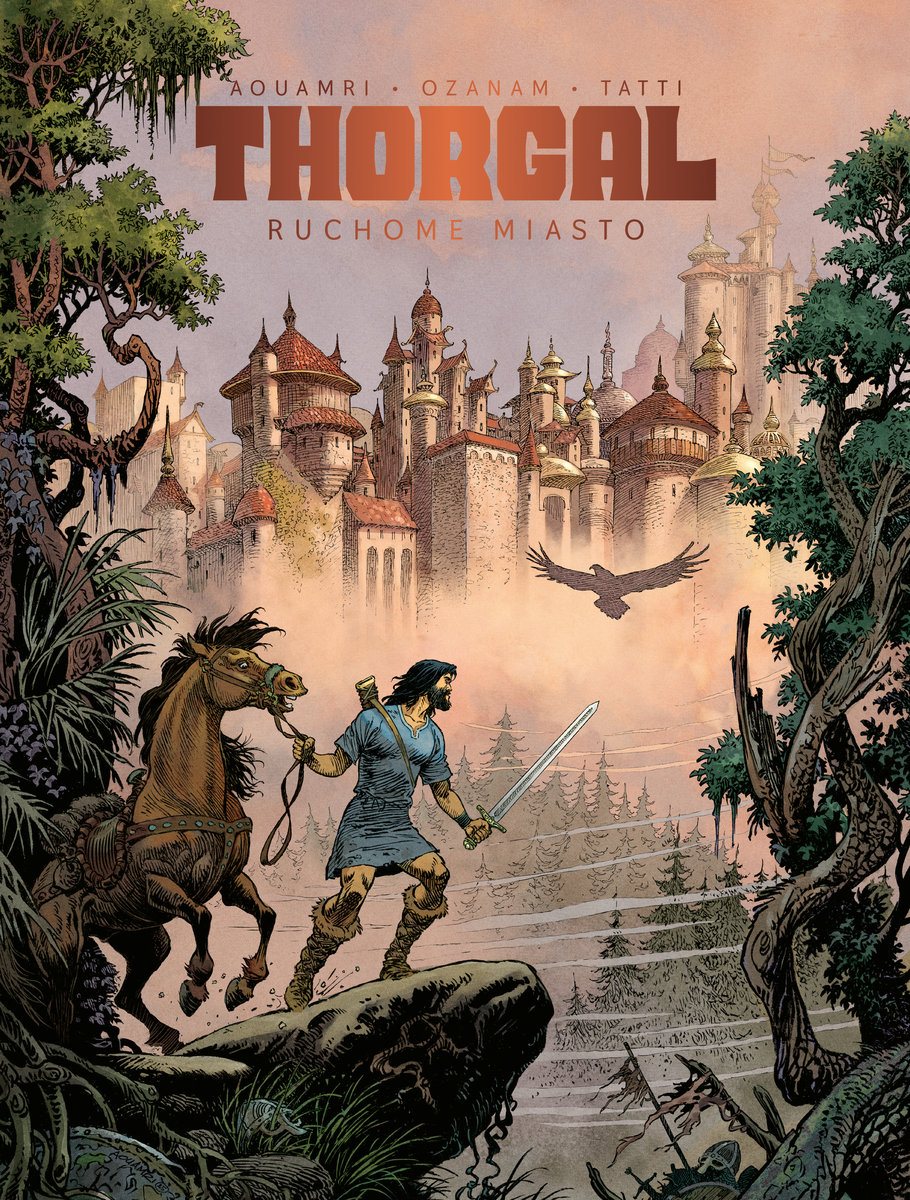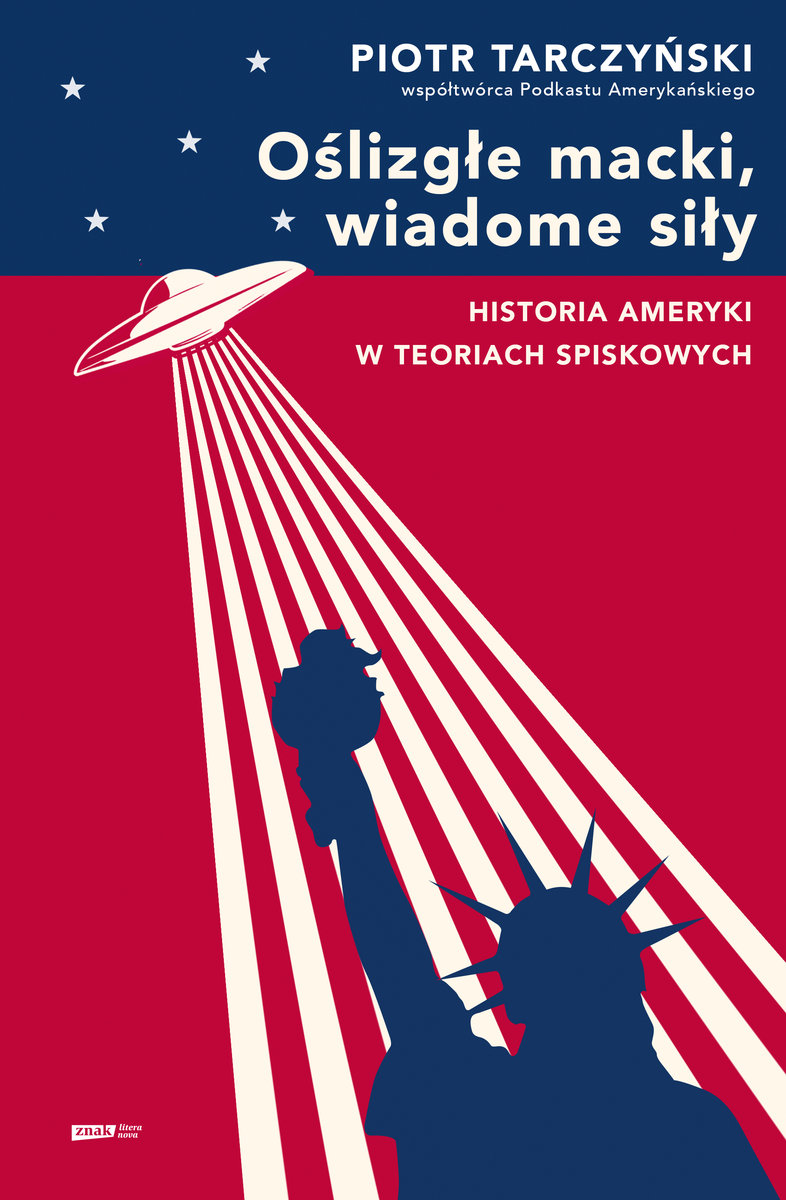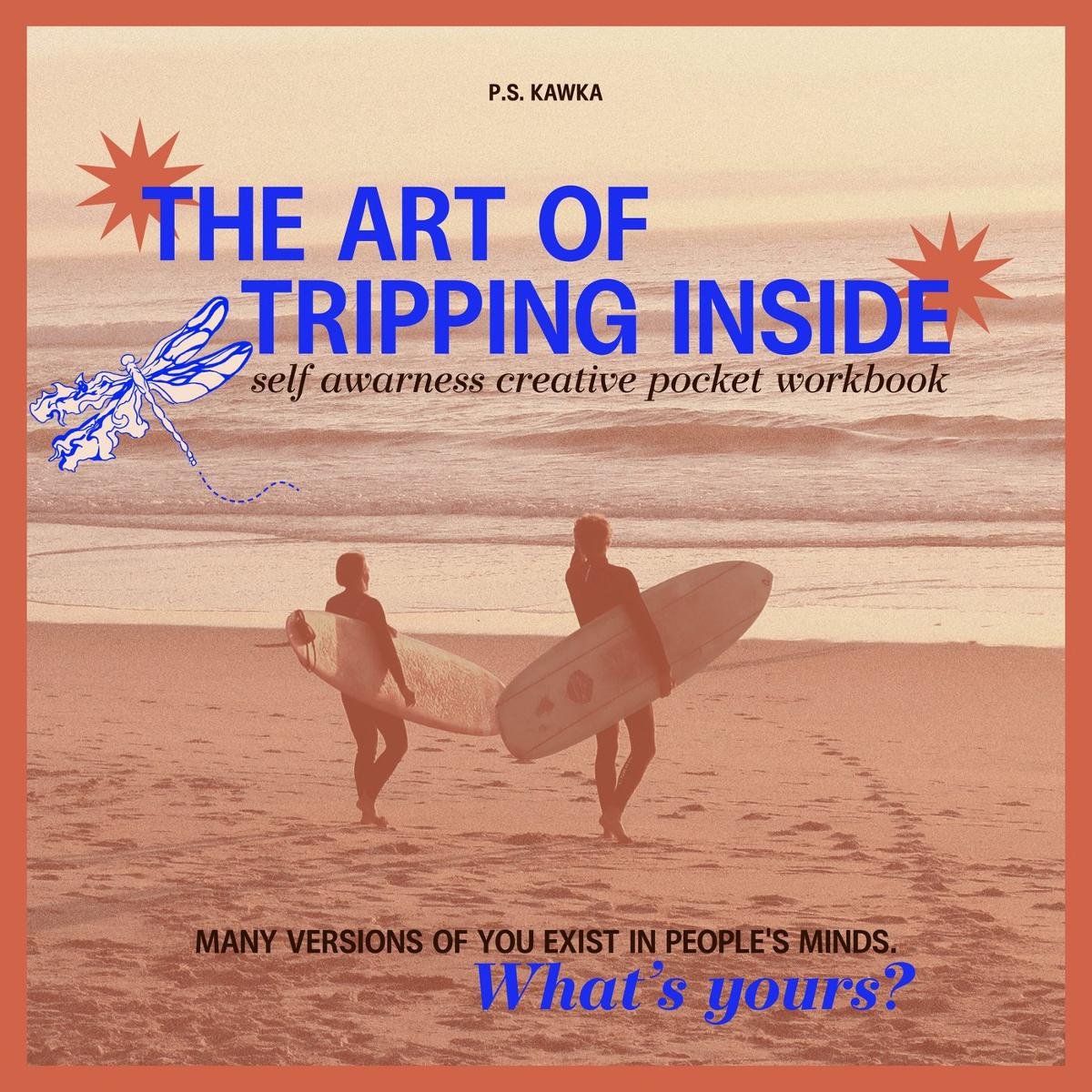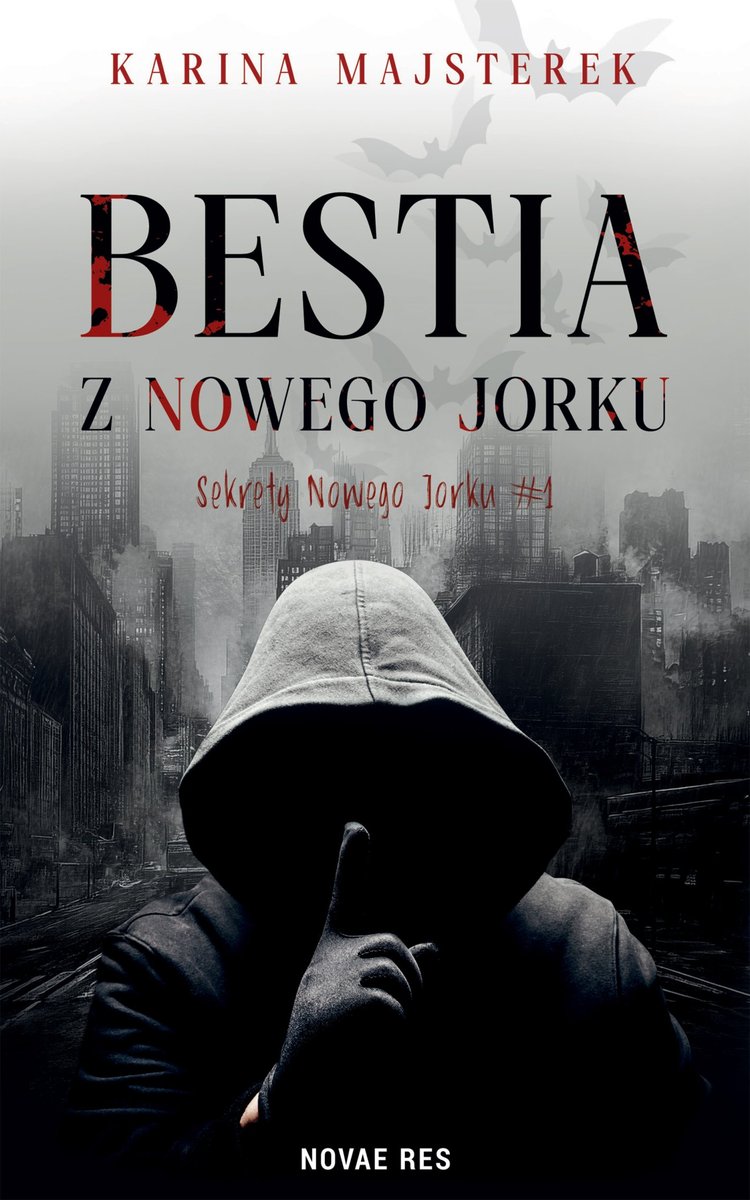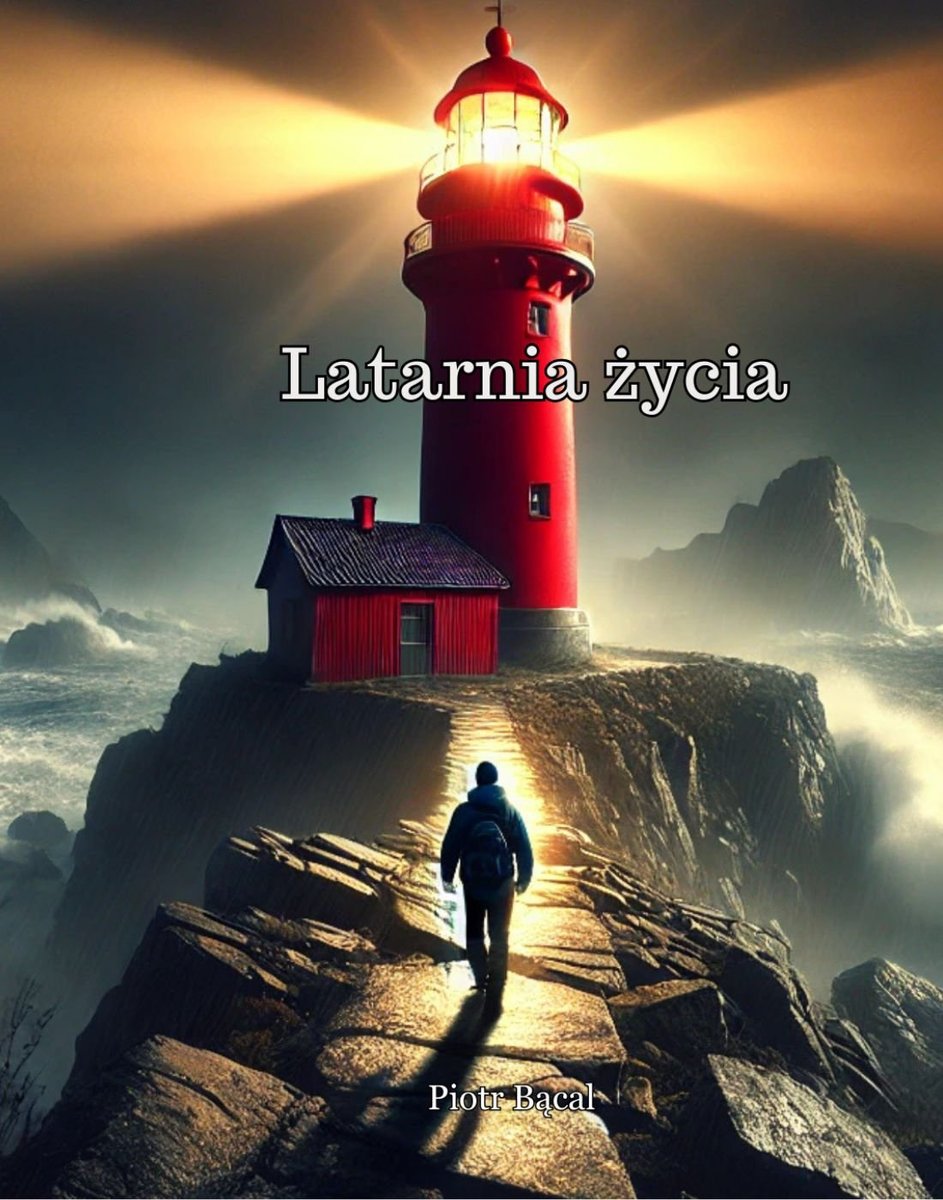black sun nazizm
| Szczegóły | |
|---|---|
| Tytuł | black sun nazizm |
| Rozszerzenie: | |
black sun nazizm PDF - Pobierz:
Pobierz PDF
black sun nazizm - podejrzyj 20 pierwszych stron:
Strona 1
Strona 2
BLACK SUN
Strona 3
Strona 4
NICHOLAS GOODRICK-CLARKE
BLACK SUN
Aryan Cults, Esoteric Nazism and the Politics
of Identity
a
New York University Press • New York and London
Strona 5
NEW YORK UNIVERSITY PRESS
New York and London
© 2002 by Nicholas Goodrick-Clarke
All rights reserved
Nicholas Goodrick-Clarke has asserted his right to be identified
as the author of this work.
Library of Congress Cataloging-in-Publication Data
Goodrick-Clarke, Nicholas.
Black sun : Aryan cults, esoteric Nazism and the politics of identity /
Nicholas Goodrick-Clarke.
p. cm.
Includes index.
ISBN 0–8147–3124–4 (cloth : alk. paper)
1. Neo-Nazism. 2. Occultism. I. Title.
JC481 .G567 2001
320.53'3—dc21 2001004429
New York University Press books are printed on acid-free paper,
and their binding materials are chosen for strength and durability.
Manufactured in the United States of America
10 9 8 7 6 5 4 3 2 1
Strona 6
Contents
Introduction 1
1 American Neo-Nazism 7
2 The British Nazi Underground 30
3 Julius Evola and the Kali Yuga 52
4 Imperium and the New Atlantis 72
5 Savitri Devi and the Hitler Avatar 88
6 The Nazi Mysteries 107
7 Wilhelm Landig and the Esoteric SS 128
8 Nazi UFOs, Antarctica and Aldebaran 151
9 Miguel Serrano and Esoteric Hitlerism 173
10 White Noise and Black Metal 193
11 Nazi Satanism and the New Aeon 213
12 Christian Identity and Creativity 232
13 Nordic Racial Paganism 257
14 Conspiracy Beliefs and the New World Order 279
Conclusion: The Politics of Identity 303
Notes 307
Acknowledgments 355
Index 357
About the Author 371
All illustrations appear as a group following p. 186.
v
Strona 7
Strona 8
Introduction
T H E R E L I G I O U S A N D M Y T H I C elements of German National Social-
ism often made the Third Reich resemble a cult in power. The pageantry of
the Nazi rallies and their quasi-liturgical nature were matched by the extraor-
dinary fervor of the huge crowds in attendance. Most participants were
caught up in an intense atmosphere of collective excitement and self-surren-
der. Hitler’s undoubted charisma and the assiduous development and culti-
vation of the Führerkult since the earliest years of the movement were crucial
factors in the construction of Nazi religiosity. Huge congregations, banners,
sacred flames, processions, a style of popular and radical preaching, prayers-
and-responses, memorials and funeral marches were all essential props for
the cult of race and nation, the mission of Aryan Germany and victory over
her enemies. The messianic figure of Adolf Hitler, the savior of Germany, tow-
ered over the entire project.
National Socialist ideology was also deeply imbued with ideas drawn from
radical religious imagination. The belief in a Jewish world conspiracy, osten-
sibly backed by the notorious invention The Protocols of the Elders of Zion, pro-
vided the image of a demonic enemy. Nazi anti-Semitism was rooted in this
apocalyptic demonology, which blamed the Jews for all ills, including liberal-
ism, communism, the corruption of morals, and the downfall of a traditional
world. The notion of national regeneration was also presented in an apoca-
lyptic spirit: only the destruction of the Jews could guarantee the salvation of
Germany in a racially pure millennium. Alfred Rosenberg, the chief Nazi Party
ideologue, was an early publicist of the Protocols, establishing their core status
in Nazi philosophy during the early 1920s. Dietrich Eckart, Hitler’s mentor in
Munich, held a gnostic-dualist view of the Jews and their antagonistic role in
German national life. Hitler’s own belief in a Jewish world conspiracy re-
mained a life-long conviction, finding terrible fulfillment in the Holocaust.
In an earlier book, The Occult Roots of Nazism, I traced these ideas of
racial election, demonology and millennium among Austrian German na-
tionalists prior to the First World War. That study was intended to show how
1
Strona 9
2 INTRODUCTION
quasi-religious and even occult ideas could bolster German identity in re-
sponse to the perceived threats of liberalism, laissez-faire capitalism, and the
rise of subject nationalities at the beginning of the last century. At this time,
large-scale industry, new metropolitan cities, the growth of capitalist finance
and organized labor were all perceived as threats by traditional groups. These
völkisch Ariosophists offered a defensive ideology of “Aryan” German folk
identity as a panacea for unwelcome, disruptive challenges to traditional sta-
tus, custom and political authority. Against the rise of anthropology and eu-
genics, these sectarians embraced ideas of race and stigmatized the Jews as the
supposed agents and beneficiaries of liberalism and modernity. Their occult
notions of racial superiority combined with anti-Semitism and millenarian
myths of national regeneration to find ultimate expression in the ideology of
the National Socialist movement.
Multicultural societies face a similar challenge today. In 1900 the white Eu-
ropean races constituted some 35 percent of world population. Owing to de-
clining birthrates among whites in advanced industrial nations, coupled with
the explosion of Third World population due to improved medicine, sanita-
tion and increasing industrialization, that figure is now just under 10 percent
in global terms. Guest workers, immigrants, ecomomic migrants, refugees
and asylum seekers all represent major population flows, bringing the popu-
lation surplus of developing countries into lands traditionally settled by white
races of European descent. These advanced industrial economies are absorb-
ing ever larger levels of immigration, and their political commitment to mul-
tiracialism is now an article of faith. Today, the United States and most Euro-
pean nations are facing a demographic shift against their historic native
stocks. The resulting issue of white identity recapitulates the dilemma of Aus-
trian Germans fearing a loss of influence in the old Habsburg Empire.
Black Sun examines the survival and revival of “Aryan” racial ideas in re-
sponse to the challenges of the postwar world. More than half a century after
the defeat and disgrace of Nazism and fascism, the far right is again challeng-
ing the liberal order of the Western democracies for political space. Radical
ideologies are feeding on the threats of economic globalization, affirmative ac-
tion and Third World immigration. The book explores the farther shores of
right-wing extremist ideology. Aryan cults, aristocratic paganism, anti-Se-
mitic demonology, Eastern religion and the occult supply underground beliefs
to individuals and groups who fear a loss of status, cultural tradition and iden-
tity in the emergent multicultural societies of the United States and Europe.
The scene is set with a historical review of neo-Nazism in the United States
and Britain. Here Nazism revived as an extremist response to communism,
liberalism and more especially the desegregation of African Americans and
Strona 10
INTRODUCTION 3
colored immigrants. In their quest for a radical counterideology, American
and British neo-Nazis championed Hitler and National Socialism against lib-
eralism and the presence of ethnic minorities. Their underground publica-
tions eulogize National Socialism as a racial policy to guarantee the global
preeminence of the white race for all time. However, despite their overriding
concern with colored races, neo-Nazi ideology still identified the Jews as the
demonic adversary of the white Aryan peoples. Here the Jews are regarded as
the architects of a multiracial world order, which supposedly dissolves all na-
tions, traditions and loyalties, before the final accomplishment of Jewish
world conquest.
The survival of anti-Semitism in a modern racist discourse predominantly
concerned with opposition to ethnic groups highlights the enduring de-
monology of Nazism. Like Gnostics cut off from the transcendent deity in a
benighted world, American and British neo-Nazis claim that Hitler and
Nazism offer the only hope of racial survival to white nations populated with
growing ethnic minorities. Anti-Semitism acts as a manichaean dualist heresy
dividing the world into forces for good and evil. Millenarian racial cleansing
and the demonology of a Jewish world conspiracy are the defining moments
of such neo-Nazi religiosity.
From the 1950s to the 1970s, neo-fascist and neo-Nazi groups essentially
imitated the past with uniformed cadres, swastika flags and marches. The
fringe political parties remained the preserve of fanatics, and recruitment was
strictly limited to those who admired fascism or were convinced anti-Semi-
tes. Even if German nationalism was transformed into a global ideology of
white racism, the historical and political experience of Nazi Germany re-
mained the dominant model for emulation. This historic allegiance was the
hallmark of the neo-Nazi cults associated with George Lincoln Rockwell and
Colin Jordan, together with their successors and followers in the postwar
Anglo-American world. Hostages to the memory of German National Social-
ism, the Anglo-American neo-Nazis remained trapped in a nostalgic cult of
Hitler worship, while universal condemnation of the Third Reich and the
Holocaust blocked any prospect of political success.
As in the case of the Ariosophists in the early twentieth century, political
isolation in a hostile world committed to liberalism has led many neo-Nazi
and neo-fascist groups to embrace occult notions of ancient Aryan wisdom.
From the 1970s onward, right-wing extremists began to repackage the old
ideology of Aryan racism, elitism and force in new cultic guises involving es-
otericism and Eastern religions. In Austria and Germany, the former SS man
Wilhelm Landig revived the ariosophical mythology of Thule, the supposed
polar homeland of the ancient Aryans. He coined the idea of the Black Sun, a
Strona 11
4 INTRODUCTION
substitute swastika and mystical source of energy capable of regenerating the
Aryan race. He popularized esoteric ideas current among the pre-Nazi
völkisch movement and the SS relating to Atlantis, the World Ice Theory, pre-
historic floods and secret racial doctrines from Tibet. He also drew attention
to Nazi interest in the medieval Cathars and Grail traditions as an alternative
Germanic religion of dualist heresy. In Italy the aristocratic elitism and eso-
teric Aryan-Nordic traditions of Julius Evola inspired a whole generation of
postwar neo-fascists. When wanted far-right terrorists fled abroad, they car-
ried Evola’s ideas to far-right parties and groups elsewhere in Europe. By the
late 1980s this little-known philosopher had become a major political icon of
opposition to democracy and liberalism in the West.
Julius Evola’s interest in the Indo-Aryan world embraced the exotic world
of Hinduism and Tantrism. Following the early lead of James Madole’s adop-
tion of Theosophy and Hindu caste hierarchies, neo-Nazi ideology assimi-
lated Eastern themes in the mystical doctrines of Savitri Devi and Miguel Ser-
rano, currently hot tips in the racist underground. Savitri Devi, the French-
born Nazi-Hindu prophetess, described Hitler as an avatar of Vishnu and
likened Nazism to the cult of Shiva with its emphasis on destruction and new
creation. Adopting the Hindu cycle of the ages, she claimed mankind is living
in the Kali Yuga (the dismal dark age), which can only be ended by regenera-
tive violence, war and genocide. Miguel Serrano, a retired Chilean diplomat
and author, blends exotic oriental religion with his Gnostic-Manichaean doc-
trine of “Esoteric Hitlerism.” Tracing the semi-divine Aryans to extraterrestial
origins, Serrano recommends kundalini yoga to repurify “mystical Aryan
blood” to its former quality of divine light. His other themes include a Gnos-
tic war against the Jews, the Black Sun, the Hitler avatar and Nazi UFOs in
Antarctica. Neo-Nazism has thereby acquired new myths and meanings for a
younger generation.
Another revaluation of Nazism resulted from the demonization of Nazism
in numerous thrillers and accounts of Nazi occultism published in sensa-
tional paperback editions during the 1960s and 1970s. Here Nazism was mys-
tified and romanticized into a neo-Gnostic religion with links to oriental
mythology, secret Tibetan doctrines, and demonic inspiration. The effect was
to dehistoricize the facts of dictatorship, terror, war and oppression into a
mythological tableau. Reality soon followed popular literature. Already in the
early 1970s, satanist groups in the United States flirted with Nazi themes as
symbolic of the forbidden, dark side of life. These experiments in the shock
value of Nazism were superseded in the 1990s by Nazi satanic cults linking
anti-Christian paganism to a transgressive praise of Hitler and the Third
Reich. In America, Europe and Australia, such “darkside” lodges espouse a
Strona 12
INTRODUCTION 5
vulgar Nietzschean worship of force backed by anti-Christian, elitist and So-
cial Darwinist doctrines.
In the 1980s and 1990s, the far right witnessed a dramatic revival in Europe
and America, especially among an alienated white youth and lower-income
groups increasingly marginalized by new high-tech industries and the ad-
vancing integration of ethnic minorities in their communities. The fast in-
crease of Hispanic and Third World immigration in the United States and
corresponding immigration from developing countries into Western Europe
has fueled fresh fears of racial inundation. The collapse of the Soviet Union
and Yugoslavia has led to further migrations involving Gypsies and East Eu-
ropean nationals to Western Europe. Free-trade agreements, the collapse of
traditional manufacturing industries and the export of service jobs abroad
through computer communications are stimulating racism and hostility to-
ward liberalism.
Globalization is unleashing a massive flow of capital, information, skills
and personnel across national borders. The Western world is now rapidly
moving through a period of far-reaching structural transformation. Borders
are increasingly permeable. Skilled workers, economic migrants, refugees and
asylum seekers are migrating in increasing numbers into the advanced indus-
trial countries. The arrival there of increasing numbers of immigrant peoples
confronts traditional national culture with unfamiliar customs, norms and
religions. At the beginning of our new century, the very idea of the nation-
state is hard-pressed by these cultural trends. A century later, liberalism and
laissez-faire capitalism are again seen as the motors of unwelcome and threat-
ening change. And once again, extremist nationalist reaction echoes völkisch
ideas by concentrating on defensive ideologies of race to counter threats to
national and cultural identity.
Certain challenged groups turn to racial identity as a last resort. In the
United States, the doctrine of Christian Identity mixes motifs of heretical
Christian dualism with a vicious theology of anti-Semitism, which regards
the Jews as the “spawn of Satan.” African Americans, Asians, Hispanics and all
other colored peoples are stigmatized as the “mud” races that are now dilut-
ing and destroying the Aryan race in its traditional white homelands. Here,
Nazi demonology and apocalyptic are freely invoked, together with Hitler
worship and Third Reich symbolism, to mobilize violence in support of a
white racial state. Other groups mix racism with Nordic pagan religions. The
runes are celebrated as magical signs of ancestral heritage and a mystical
blood loyalty. In the United States, Britain, Germany and the Scandinavian
countries, racial pagan groups ponder runes, magic and the sinister mythol-
ogy of the Norse gods Wotan, Loki and Fenriswolf. The racial interpretation
Strona 13
6 INTRODUCTION
of these esoteric ideas, cosmology and prophecies betrays these groups’ over-
whelming anxiety about the future of white identity in multiracial societies.
This book originated as a sequel volume to The Occult Roots of Nazism in
order to document the survival of occult Nazi themes in the postwar period.
As work progressed, however, my perspective broadened considerably. Far
from tracing faded fascist mystics and redundant ideas, I found that I was ac-
tually having to write a new history of contemporary neo-völkisch groups and
ideology in America and Europe. It became apparent that this new völkisch re-
vival, especially prevalent in the English-speaking world, documents the re-
action to the high tide of liberalism and globalization from the 1980s onward.
Just as the original völkisch movement arose as a defensive ideology of Ger-
man identity against modernity in the late nineteenth century, this neo-
völkisch revival acts as a defensive ideology of white identity against multicul-
turalism, affirmative action and mass Third World immigration. As these
neo-völkisch groups elaborate their concerns with identity and ethnicity,
many of them are drawn, as were their German predecessors, toward esoteric
themes of Aryan origins, secret knowledge and occult heritage. Like the Ar-
iosophists of 1890–1945, the new white-pride movements represent only the
most radical response of Western societies that are now having to confront
fundamental challenges to their cultural identity. The original völkisch move-
ment was the ideological precursor of National Socialism and the Third
Reich. The rise of a new völkisch movement must therefore give us serious
pause. Who knows what sort of politics and societies will emerge by the years
2030–50 from the growing sense of white marginizalization? I am aware that
this provocative study of contemporary racist movements may well offend
politically correct sensibilities by posing the very questions which liberal elites
prefer to ignore or suppress.
The risks of racist religiosity are great. By projecting grievances, fears and
anxieties onto the “shadow” figures of other races, religious transcendence
is stunted and perverted into the dynamics of exclusion and hatred. Instead
of genuine spirituality, there is partiality, separation, restriction. A rigid self-
righteousness leads down into the spiritual basement of a primitive dual-
ism, where pseudo-salvation depends on the elimination of the Other. The
political projection of religious Manichaeism onto human differences in-
evitably leads to strife and violence. Whenever human groups are inter-
preted as absolute categories of good and evil, light and darkness, both the
human community and humanity itself are diminished. Such degraded re-
ligion never leads to light but only into darkness. My hope is that an un-
derstanding of the substitute faiths documented in these pages, together
with their causes, can help us avoid the recurrence of past conflagrations.
Strona 14
1
American Neo-Nazism
A N E X OT I C I M P O RT from Europe, American neo-Nazism has always
transcended American nationalism. American neo-Nazis regard themselves
as the brothers of all white men in a global movement of racial nationalism.
While they remain fixated on the figure of Adolf Hitler as the lost savior of the
Western world, his German nationalist horizons are superseded by their
wider vision of a pan-Aryan movement led by the United States as the lead-
ing white power of the postwar world. American neo-Nazism traces its roots
to the early 1950s, when the anti-communist ideology of the Cold War could
find a nostalgic model in Hitler’s attempted destruction of the Soviet Union.
Neo-Nazism quickly stigmatized liberalism and the American Jews as the
aides and abettors of communism in a violent anti-Semitism based on Nazi
models. However, it was desegregation and the black civil rights movement of
the early 1960s which have provided the enduring political motivation for
American racial nationalism. The social enfranchisement of black Americans,
forced integration, busing affirmative action and equal opportunities led the
American neo-Nazis to cast themselves in a white supremacist role. When
large-scale Hispanic and other Third World immigration began in the 1980s,
American neo-Nazism regarded itself as the front-line defense of America’s
survival as a white nation. The changing ethnic composition of the United
States is a profound issue, as is the political cohesion of an increasingly diverse
multicultural society. The progression of American neo-Nazism from George
Lincoln Rockwell in the 1960s to William Pierce in the 2000s illustrates how
the religious myths of German National Socialism are brought to bear on dra-
matic cultural changes in American demography and identity.
The self-styled Führer of the 1960s, George Lincoln Rockwell will always
be identified as the founder of the overtly pro-Hitler, postwar Nazi movement
in the United States. Rockwell’s extravagant praise for Hitler, his violent
racism against the Jews and blacks, allied with excess and exhibitionist tactics,
have ensured him a lasting place in the folklore of American political extrem-
ism. Despairing of his earlier political efforts with old-style far-right groups,
7
Strona 15
8 AMERIC AN NEO-NAZISM
Rockwell founded his American Nazi Party in 1959, adopting a brazen Nazi
image complete with swastika flags, stormtroopers and open declarations of
his intentions to gas the Jews. He fantasized that he would become president
of the United States by 1973 and that he would enjoy the support of a Senate
and House of Representatives made up of members of his party. His political
program was firmly grounded in a policy of “white survival” which aimed at
the wholesale repatriation of all American Negroes to Africa and at the exter-
mination of the Jews, whom he regarded as the architects of racial desegrega-
tion, national decline and cultural degeneracy.
A mixture of clowning and provocation characterized all of Rockwell’s
public appearances. Soon after founding the party, Rockwell and his men reg-
ularly picketed the White House with signs that read “Save Ike from the kikes,”
“The only communist party in the Middle East is in Israel,” “Gas red Jewish
spies” and “Communism is Jewish.” In 1961 Rockwell drove a “Hate Bus”
through the South until his party was apprehended at New Orleans. The sides
of the vehicle were hung with notices such as “We do hate race-mixing” and
“We hate Jew-Communism.” Back in Washington, his stormtroopers used to
drive a bus around the city bearing the slogan: “Rockwell is right! Who needs
niggers?” In Boston and Philadelphia, the party picketed cinemas showing the
popular film Exodus, which told the story of Jewish immigrants to Israel after
World War II, with banners demanding “America for Whites and Gas Cham-
ber for Traitors.” Throughout the mid-1960s, Rockwell and his American Nazi
Party were involved in numerous protests and disruptions. Charges against
stormtroopers ranged from fighting, loitering, vagrancy and assault to deser-
tion, criminal defamation and unlawful possession of firearms.
What makes an American Nazi? Examining Rockwell’s life, one finds a
mixture of religious conviction and idealism driving a noisy program of anti-
Semitism and anti-communism, white supremacy and eugenics. His exhibi-
tionist tactics were very likely influenced by his parental background. George
Lincoln Rockwell was born on 9 March 1918 in Bloomington, Illinois, the eld-
est son of theatrical performers. His father, George Lovejoy “Doc” Rockwell,
was a vaudeville comedian of English and Scottish ancestry with a top act on
Broadway and well known on radio and in the leading theaters of the coun-
try. His mother, born Claire Schade, was a young German-French toe dancer,
part of a family dance team. Following his parents’ divorce, he spent his child-
hood staying with his mother in rural Illinois and his father on the Maine
coast, where regular house guests included Fred Allen, Benny Goodman and
Groucho Marx.1
After completing prep school at Hebron Academy, Rockwell attended
Brown University in 1938 to study philosophy and sociology. He quickly be-
Strona 16
AMERIC AN NEO-NAZISM 9
came politicized against the liberal, egalitarian tenor of social science and his
teachers. Later, he became convinced that liberalism was the “pimping little
sister” of communism. His grades were poor but he was art editor of the cam-
pus magazine, Sir Brown. His cartoons ranged from the humorous to comic-
book horror with images of violence, destruction and bombings.2 The
prospect of war offered a welcome relief from his studies. Eager for action,
high-strung and edgy, Rockwell was swayed by the contemporary buildup of
anti-German opinion. By March 1941, he had enlisted in the Naval Air Corps
and quickly won his wings. He served as a naval aviator flying anti-submarine
missions in the South Atlantic and South Pacific throughout World War II,
commanded the naval air support at the battle for Guadalcanal and during
the invasion of Guam in August 1944 and was demobbed with the rank of
lieutenant commander and several decorations in October 1945.3
Meanwhile, he had married a girl he had known as a student at Brown.
Rockwell spent the first five years after leaving the navy studying art and then
taking a variety of jobs as a commercial photographer, a painter, an advertis-
ing executive and a publisher in Maine and New York. He showed some
promise as a commercial artist, enrolling at the Pratt Institute in New York. In
1948 he won a $1,000 prize in a national art contest sponsored by the National
Society of Illustrators. But war again intervened in his career. In 1950, with
the outbreak of the Korean War, Rockwell returned to active duty, training
fighter pilots in southern California. His involvement with the Korean con-
flict bred in him an enduring hatred of communism and a paranoid fear that
it would undermine the United States.4
It was here that Rockwell first became politically engaged in the campaign
to have the military hero General Douglas MacArthur elected president. The
anti-communist revelations of Joseph McCarthy also dominated this period,
and Rockwell was deeply suspicious of the motives of those who sought to
discredit him. An old lady in San Diego involved in the MacArthur cam-
paign showed him some newspapers that she claimed were controlled by
Jews and out to smear both men. She introduced him to McCarthy’s
speeches and Conde McGinley’s anti-Semitic newspaper, Common Sense,
which contained startling revelations of a secret Jewish-communist plot be-
hind the scenes of twentieth-century history. She also encouraged him to at-
tend a speech of the veteran anti-Semite and rabble-rouser Gerald L. K.
Smith in Los Angeles. Rockwell was overwhelmed by Smith’s emotive expo-
sure of the Jewish conspiracy and bid for world power.5 Through further
reading in the San Diego public library, he became convinced of the exis-
tence of a Jewish-communist world conspiracy. Rockwell was staggered by
both the seeming magnitude of the conspiracy as well as the official and
Strona 17
10 AMERIC AN NEO-NAZISM
media silence concerning its existence. Down in the dark book stacks of the
San Diego library one autumn day in 1950, Rockwell experienced illumina-
tion and political awakening. He had always felt that the world was out of
joint, that mischief was afoot, but now he felt he held the key to the past and
the present. But how could he fight against this monstrous and universal
plot? Given the apparent enormity of the Jewish world conspiracy, Rockwell
now wondered why America had gone to war on the side of the communist
Soviet Union and opposed “Christian Germany, which never had a single
highly placed spy in [America], and no plans for conquering the world.” The
example of Adolf Hitler and his crusade against world Jewry and commu-
nism quickly came to mind. Rockwell believed Hitler had understood the
Jewish menace from the outset of his career and that the Jews had involved
Britain and America in the conflict for their own interests. Early in 1951,
Rockwell found a copy of Mein Kampf in a local bookshop, read it and saw
the world anew:
[Here] I found abundant “mental sunshine,” which bathed all the gray world
suddenly in the clear light of reason and understanding. Word after word, sen-
tence after sentence stabbed into the darkness like thunderclaps and light-
ningbolts of revelation, tearing and ripping away the cobwebs of more than
thirty years of darkness, brilliantly illuminating the mysteries of the heretofore
impenetrable murk in a world gone mad. I was transfixed, hypnotized. . . . I
wondered at the utter, indescribable genius of it. . . . I realized that National So-
cialism, the iconoclastic world view of Adolf Hitler, was the doctrine of scien-
tific racial idealism—actually a new religion.6
Thus was George Lincoln Rockwell converted to the religion of National So-
cialism. In later years he would write that “future generations will look upon
Adolf Hitler as the White Savior of the twentieth century, and the
Fuehrerbunker in Berlin as the Alamo of the White race.”7
Some eight years were yet to elapse before he became an outspoken Hit-
lerite at the head of the American Nazi Party. Meanwhile, in November 1952,
the navy had assigned him to a base at Keflavik in Iceland, where he spent two
years as a F8F Bearcat pilot and achieved the rank of commander. Here he met
his second wife, Thora Hallgrimsson, a member of a prominent local family
and the niece of Iceland’s ambassador to the United States. Rockwell was still
engrossed in Mein Kampf and took his bride to Berchtesgaden, Germany, for
their honeymoon. They made a pilgrimage to Hitler’s Eagle’s Nest in a mood
of reverence and fascination.8 On returning to civilian life, he decided to enter
magazine publishing, hoping to find both a livelihood and a forum for his po-
Strona 18
AMERIC AN NEO-NAZISM 11
litical ideas. He was also active among right-wing groups, attempted to launch
an American Federation of Conservative Organizations and tried to advance
by concealing his Nazi hard-core ideology behind a respectable front. But
eventually he despaired of this strategy as it failed to attract dedicated racists
and anti-Semites.9
Prompted by a series of recurrent dreams in the winter of 1957–58 that al-
ways ended with his meeting Hitler, he decided to go public against what he
perceived as Jewish power in America, with the financial patronage of Harold
N. Arrowsmith, a wealthy anti-Semite. At Arlington, Virginia, they formed the
National Committee to Free America from Jewish Domination. After a mav-
erick campaign for the governorship of Georgia, Rockwell’s first opportunity
for confrontation was provided by the U.S. government’s military aid in May
1958 for the Chamoun regime in Lebanon, which was unpopular with
Lebanese Arabs but enjoyed the support of the Israelis. On 29 July 1958 Rock-
well led a picket of the White House, protesting against Jewish influence on
the government, and organized simultaneous demonstrations in Atlanta,
Georgia and Louisville, Kentucky. Earlier in the year, Rockwell had been in-
volved in the founding of the National States Rights Party, a new anti-Semitic
and racist party in Georgia.10 When a synagogue was blown up in Atlanta on
12 October, the police seized Rockwell’s supporters there, and newspapers
around the world carried stories implicating Rockwell. Now he and his fam-
ily were harassed and his home was attacked; Arrowsmith retreated from the
glare of the publicity and withdrew his support.11
His wife and children soon found the strain too great and returned to Ice-
land. Deserted by his family and former supporters, Rockwell faced a bleak
and solitary future in the early months of 1959. One cold March morning in
his house at Arlington, he found himself alone communing with a huge
swastika banner and a plaque of Hitler. Following another “religious experi-
ence” involving a brief state of universal awareness, he became convinced he
had to fulfill Hitler’s mission in a total, global victory over the forces of
tyranny and oppression. He would henceforth become an overt National So-
cialist and self-proclaimed devotee of Hitler, abandoning all thought of liai-
son with conservative groups and respectability. He proudly displayed his
Nazi banner, recruited a handful of stormtroopers to whom he issued
grayshirt uniforms and swastika armbands, mounted a large illuminated
swastika on the roof of his house and founded the American Party, later
called the American Nazi Party. Besides the party headquarters at his house
at 2507 North Franklin Road in Arlington, Rockwell also maintained a bar-
racks in a run-down farmhouse nearby for his growing detachment of
stormtroopers.12
Strona 19
12 AMERIC AN NEO-NAZISM
Once Rockwell had decided on a flagrant, open avowal of Nazism, his ac-
tivity was wholly directed toward the provocation of the Jewish enemy and
society at large, which he regarded as its passive victim. Besides flaunting their
Nazi uniforms and insignia, he and his stormtroopers missed no opportunity
to shock and outrage domestic opinion. From 1960 onward, his brash and
sensational exploits were designed to achieve maximum press coverage for an
otherwise crackpot fringe group that numbered no more than two hundred
members at its peak.13 Surrounded by fluttering Stars and Stripes and
swastika flags, Rockwell held speeches before curious crowds and eager re-
porters advocating a national and then global program of eugenics to purify
the Aryan race. He ceaselessly denounced the Jews as representatives of Marx-
ism, unbridled capitalism, racial degeneration and cultural bolshevism and
demanded their trial and execution by gassing. Rockwell effectively forced the
media to give him publicity by concentrating on the distribution of imflam-
matory leaflets, creating public incidents and haranguing crowds to provoke
violent opposition.14 The American Nazi Party also pursued a racist policy to-
ward blacks. Rejecting all race mixing and desegregation as Jewish wiles to
mongrelize the American racial stock, Rockwell proposed to resettle all Amer-
ican Negroes in a new African state, to be funded by the U.S. government. He
even appeared as a guest speaker at a major convention of Black Muslims in
Chicago on 25 February 1962, where he told an audience of more than twelve
thousand that he considered Elijah Muhammad the Adolf Hitler of the black
man. Privately, Rockwell imagined that such a deportation program would be
preceded by an imminent race war and the mass slaughter of blacks.15
Rockwell’s success in achieving notoriety owed much to the growing
strength of the contemporary civil rights movement among American blacks,
led by Martin Luther King Jr. During the early 1960s, Negroes were becoming
more politically aware: protests, marches and the Watts and Harlem riots sig-
naled Negroes’ impatience for genuine equality in American society. This was
the period of liberal concern for the blacks’ predicament, measures for deseg-
regation were undertaken and the busing of white and black children to
mixed schools became widespread. All this was anathema to Rockwell, who
regarded blacks as a primitive, lethargic race who desired only simple pleas-
ures and a life of irresponsibility. Formerly content as slaves, their problems
had begun after their closer involvement with the social and economic life of
whites. Rockwell was convinced that Jews had promoted blacks into a hope-
less position of alleged equality with whites. Deeply frustrated by their in-
ability to compete in education and for jobs, blacks had become violent and
thereby fulfilled Jewish plans for fomenting the breakdown of the traditional
order and the advent of communism.16 By harping on the threat of escalating
Strona 20
AMERIC AN NEO-NAZISM 13
Negro riots in conjunction with his rabid anti-Semitism and anti-commu-
nism, Rockwell attempted to exploit profound American anxieties about the
apparent disorderliness of the 1960s.
The American Nazi Party engaged in a constant barrage of protests and dis-
ruptions at this time.17 Jewish youths were beaten up, a synagogue was
bombed in Bridgeport, Connecticut, and the word “Jew” was painted on front
doors. In early 1962 Rockwell began planning a massive rally to celebrate
Hitler’s birthday in April. During the summer he attended an international
Nazi camp-congress organized by the British neo-Nazi leader Colin Jordan in
Gloucestershire in defiance of a Home Office ban on his entry to Britain. Here
agreement was reached on the founding of a World Union of National Social-
ists.18 Following his deportation back to the States, Rockwell picketed the
White House in protest. In September 1962 he awarded one of his captains,
Roy James, a medal for punching Martin Luther King Jr. in the face in Birm-
ingham, Alabama. There were also several disruptive incidents in the House of
Representatives, including that of Robert A. Lloyd, who ran into the proceed-
ings in blackface and a stovepipe hat, shouting “Long live Rockwell” and ask-
ing to be seated as a Missisippi congressman in a parody of Negro speech.19
Rockwell himself was charged with disorderly conduct and stood trial in New
York in June 1966. Defended by a Jewish lawyer, Rockwell was acquitted
through the court’s upholding of the free speech he would deny to his enemies.
Alongside all this headline-grabbing activity on the American scene, Rock-
well was attempting to establish the philosophical credentials of the World
Union of National Socialists (WUNS). The leadership of the WUNS, a feder-
ation of some seven national Nazi groups and parties in various countries, in-
cluding Britain, the United States, Chile, Denmark, France, Argentina and
Australia, was originally vested in Colin Jordan on its establishment in August
1962. However, after Jordan was sent to prison on public order offenses later
that year, this office passed to Rockwell. Through the WUNS, Rockwell was
determined to present the racial idealism of National Socialism as a program
of global Aryan power above the nationalisms of the past to a younger gener-
ation of new supporters. Only with such an ideology, he believed, would it be
possible to counter the Jewish world conspiracy and the rising tide of colored
peoples all over the planet. In the spring of 1966, Rockwell commenced pub-
lishing a new WUNS periodical entitled National Socialist World from his
headquarters at Arlington as a new forum for international Nazi ideology.20
Rockwell had appointed as its editor Dr. William Luther Pierce (b. 1933),
a newcomer to the neo-Nazi movement. Pierce was a physicist by profession
who had studied at Rice University and the California Institute of Technol-
ogy, completed his doctorate at the University of Colorado and then spent


